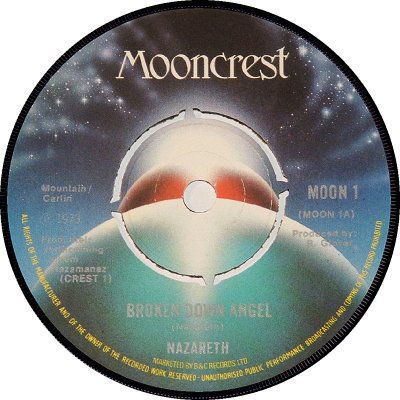

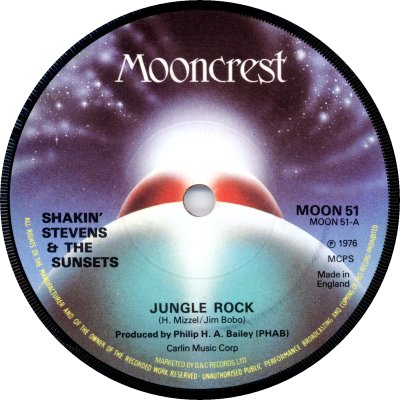
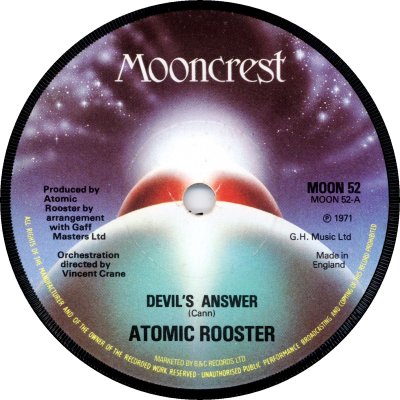
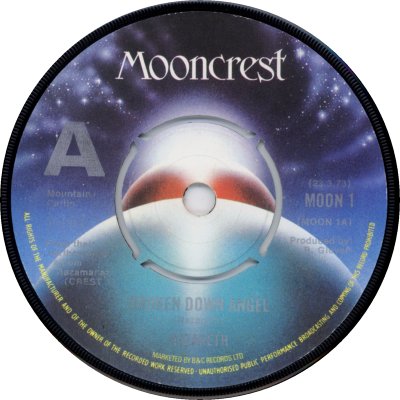


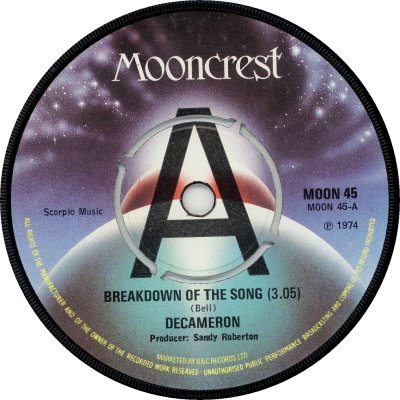


The roots of Mooncrest lie in a publishing company, Moon Crest, which was formed by Tony Stratton-Smith of Charisma Records in September 1970 ('Record Retailer', 26th September). It made its debut as a record label some two-and-a-half years later as a joint venture between Charisma and B&C. 'Music Week' of the 24th of February 1973 said that Stratton-Smith and B&C's Lee Gopthal would announce details the following week; sure enough, 'MW' 3rd of March was able to reveal that the new label would be a joint venture between Charisma and B&C, that it would be headed by Stratton-Smith and Lee Gopthal, and that it was intended to be a 'quality Pop' label. The article added that Mooncrest's arrival followed B&C's decision to concentrate on marketing rather than on record production and the subsequent phasing out of the B&C and Peg labels. The most successful albums on those labels - notably by Nazareth and Steeleye Span - were quickly reissued on Mooncrest.
The new label enjoyed a promising start when its first single, 'Broken Down Angel' b/w 'Witchdoctor Woman' (MOON-1; 3/73) got into the Top 10; the band gave Mooncrest four more hits and proved to be its biggest sellers. Hotshots had a Top 5 single shortly afterwards in the form of a Reggae version of 'Snoopy vs. The Red Baron' b/w 'What Do You Say' (MOON-5; 5/73), but further Chart success proved elusive despite the presence of some respectable and quite well-known artists on the roster, such as Ian Matthews and Decameron. There was even a David Bowie rarity on Mooncrest, in the shape of 'Hang On To Yourself' b/w 'Man In The Middle' (MOON-25; 5/74), which was credited to Arnold Corns and had been out a couple of years earlier on B&C (CB-189; 8/72). In August 1973 Mooncrest obtained the rights to Byron Lee's Reggae label, Dragon ('MW', 18th August), which had previously been handled by Island; from that point Dragon singles carried a credit to Mooncrest (later to B&C) at the bottom of their labels.
The terminal financial difficulties suffered by B&C in the middle of 1975 led to Mooncrest running into the buffers temporarily. It emerged at the far side of the troubles as a part of the newly-formed Trojan Records Limited (see Trojan), and thus as a member of Marcel Rodd's Saga Records (q.v.) stable, but after a few LP reissues and five more singles over the course of some fifteen months it was shelved again. It was revived again in 1986 and managed another dozen or so singles in that year; it added others sporadically until the end of 1990. Later it was given a new lease of life as a constituent of the Sanctuary group, when that company purchased Trojan.
Numbering was in the MOON-0s during the '70s; singles with MOON-1000 numbers date from 1986 onwards, as do any company sleeves with Mooncrest's name on them. The release of MOON-50 by the Magnificent Mercury Brothers and MOON-51 by the Fortunes appears to have been cancelled as a result of B&C's problems; when Mooncrest was revived by its new owners those numbers were reused for different singles.
The label design remained the same throughout. The first two singles initially had the credits printed in silver (1, 5), and some came in a special sleeve (9). For re-pressings and the remaining issues the silver was replaced by black, presumably for the sake of legibility. Mooncrest singles from the '70s often came in a plain navy-blue sleeve (10). As was the case with those of its stablemate Charisma, many Mooncrest demos were pressed with the 'A' side on both sides, which is unusual for U.K. labels; only a handful during February to April 1975 (MOON-40 to MOON-45) had the usual 'A and B Side' arrangement. Demo markings varied: the first two had a medium-sized 'A' at 10 o'clock (5); the 'A' moved to 2 o'clock for the next four releases. MOONs 7 to 37 had either EMI-style markings (6) or an 'A' at 2 o'clock (7); the 'A' sometimes moved to 10 o'clock or 4 o'clock, and it underwent an occasional change in its font and size. From MOON-40 the 'A' migrated to the centre and grew hugely (8). Up to and including MOON-9 the labels also had the release date on them. Manufacture was by EMI until the B&C crash; Saga owned pressing facilities, and after taking control of Mooncrest they presumably manufactured its records themselves. There was no change in the label design under Saga, but the credits migrated temporarily and solid centres became the norm (3). After the first two Saga-era releases the artist credit returned to its old place at the foot of the label (4). Thanks to Jason Mills for the first scan.
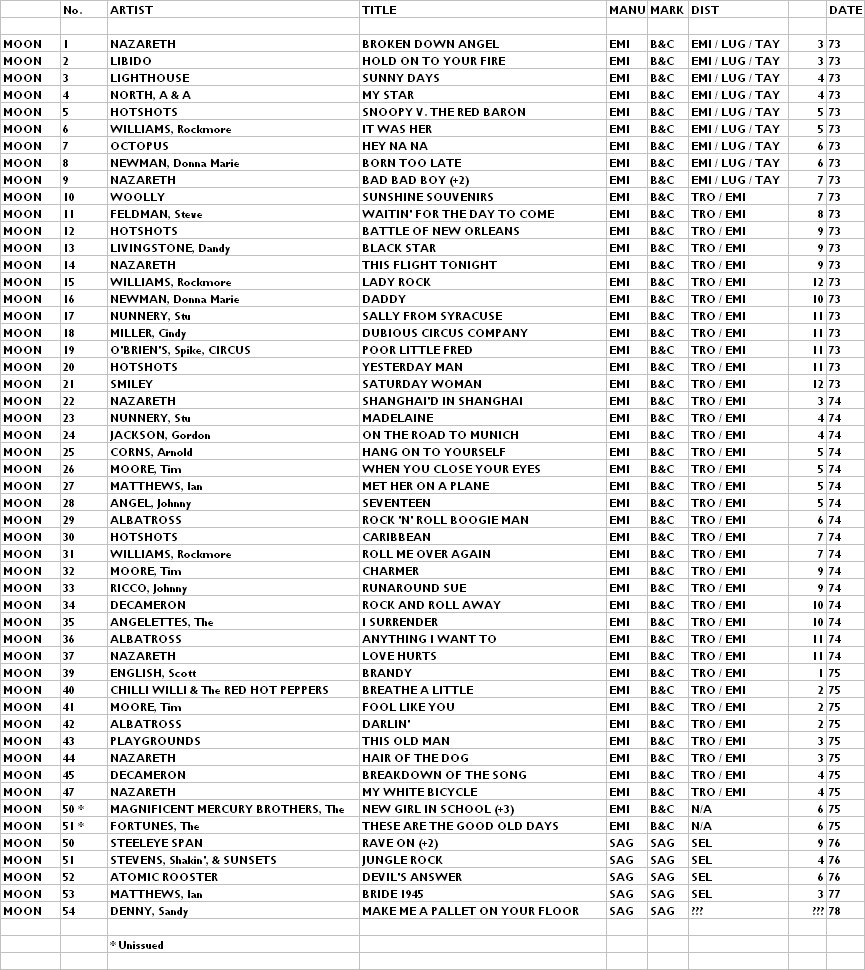


Copyright 2006 Robert Lyons.

